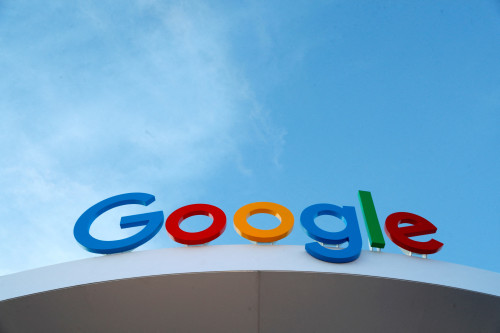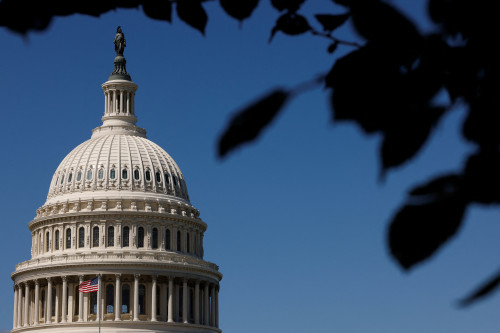By Marisa Taylor and Joey Roulette
WASHINGTON (REUTERS) – A September power outage at a California facility of SpaceX, the space venture of billionaire entrepreneur Elon Musk, caused a loss of ground control for at least an hour during a mission that included the first private spacewalk in history, according to three people familiar with the problem.
The spacewalk, part of SpaceX’s five-day Polaris Dawn mission, was carried out by private astronauts including Jared Isaacman, a fellow billionaire and longtime Musk partner who is now nominated by incoming President Donald Trump to be administrator of the National Aeronautics and Space Administration, or NASA.
The outage, which hasn’t previously been reported, meant that SpaceX mission control was briefly unable to command its Dragon spacecraft in orbit, these people said. The vessel, which carried Isaacman and three other SpaceX astronauts, remained safe during the outage and maintained some communication with the ground through the company’s Starlink satellite network.
“Not having command and control is a big deal,” one of the people familiar with the problem told Reuters. “The whole point of having mission operators on the ground is to have the ability to quickly respond if something happens.”
SpaceX and Musk didn’t respond to questions from Reuters about the incident.
The outage raises questions about the disclosure of mishaps by private space companies and whether conflicts of interest could mar the ability of NASA and regulators to weigh their significance at a time when key figures from the sector, including Musk and Isaacman, are poised for prominent positions in the upcoming Trump administration. In their proposed roles – Isaacman running NASA, Musk at the helm of a government efficiency commission – both men could have significant sway over agencies that regulate and transact with SpaceX and other private space operators.
Reuters couldn’t determine whether SpaceX notified the Federal Aviation Administration, which licenses space launches, about the outage. A second person familiar with the incident said SpaceX did notify NASA, particularly because the same type of spacecraft was to be used weeks later in a mission involving NASA astronauts. SpaceX, the person said, told the agency the problem had been resolved quickly and wouldn’t be an issue in future missions.
NASA officials have said they maintain close contact with SpaceX about its missions because of the agency’s frequent work with the company. Spokespeople at NASA and the FAA didn’t respond to Reuters’ questions for this story
At present, safety standards for private space missions aren’t regulated by U.S. law and private operators aren’t required to disclose mishaps in orbit because of a moratorium approved by Congress in 2004. The moratorium, designed to protect business interests in the highly competitive sector and renewed periodically by Congress, is criticized by some experts because it limits the ability of regulators to investigate problems that could have implications for the safety and operability of the entire industry.
Disclosure is needed “so companies throughout the industry can know what’s going on and mitigate or prevent a similar incident,” said Douglas Ligor, a senior social scientist at the RAND Corporation, a California-based think tank hired by Congress last year to study the moratorium. Congress is expected to renew the moratorium before its current extension expires in January.
The September outage, the people familiar with the problem told Reuters, occurred when a leak in a cooling system atop a SpaceX facility in Hawthorne, California, triggered a power surge. The surge knocked out mission headquarters, disabling the ability of operators to send commands or perform controls that would normally be standard during a spacecraft’s mission.
The outage also hit servers that host procedures meant to overcome such an outage and hindered SpaceX’s ability to transfer mission control to a backup facility in Florida, the people said. Company officials had no paper copies of backup procedures, one of the people added, leaving them unable to respond until power was restored.
Reuters couldn’t determine the precise timing or duration of the outage. Two of the people familiar with the problem said it happened sometime before the Sept. 12 spacewalk and that at least one hour passed before power was restored. Had mission control remained offline, they said, the astronauts had enough training to control the spacecraft themselves.
A month before the Polaris Dawn launch, Musk responded to an Isaacman post about the mission on X, Musk’s social media platform. “This is an historic mission,” Musk wrote. “Everything possible must be done to ensure astronaut safety.” After the spacewalk, the first conducted by astronauts not part of a national space program, the feat was widely hailed as a milestone in commercial space exploration.
Since then, Musk has grown increasingly outspoken about government interference in the private sector and touted his plans, as the head of Trumps’ planned efficiency commission, to slash federal regulations. Reuters reported earlier this week that Trump’s transition team wants to scrap car-crash reporting requirements opposed by Tesla, Musk’s electric-vehicle company. The efficiency commission’s decisions could impact NASA and the FAA, a regulator frequently criticized by Musk and SpaceX as a hindrance.
Isaacman, for his part, as NASA administrator would be running an agency that has awarded more than $15 billion in contracts to SpaceX, a company with whom he has had extensive business dealings. In addition to funding two missions in which he has participated as a SpaceX astronaut, Isaacman is the chief executive and controlling shareholder in Shift4 Payments, a technology firm he founded that in turn owns shares in SpaceX, according to regulatory filings.
The size of Shift4 Payments’ stake in SpaceX at present isn’t clear because the Musk venture is privately held and doesn’t disclose financial or ownership details. In its 2021 annual report, Shift4 Payments said it had invested more than $27 million by then in SpaceX. Shift4 Payments has also said SpaceX is a client.
Shift4 Payments and Isaacman didn’t respond to Reuters’ requests for comment.
In a public statement after Trump announced his NASA nomination earlier this month, Isaacman said he would step down as Shift4 Payments’ chief executive if his appointment, which must be confirmed by the Senate, succeeds. He said he would retain most of his company stock, “subject to ethics obligations,” but reduce his voting power as a shareholder, according to a copy of the statement filed with the Securities and Exchange Commission.
Even if confirmed for the NASA job, Isaacman’s extensive links to SpaceX could remain a source of concern for some. If he retains those ties, it “could pose conflicts of interest including with respect to safety,” said Cary Coglianese, an expert on public administration and law at the University of Pennsylvania.
(Additional reporting by David French. Editing by Paulo Prada.)






